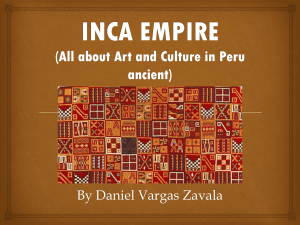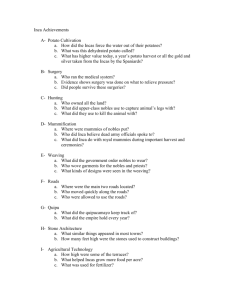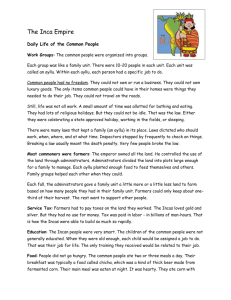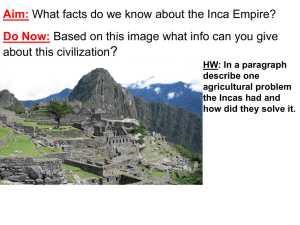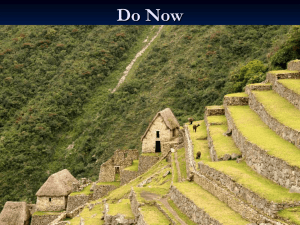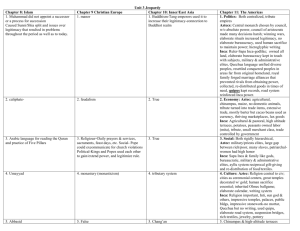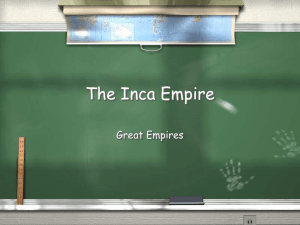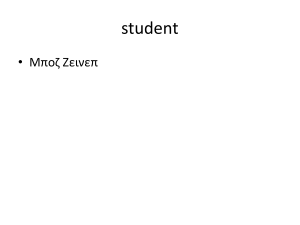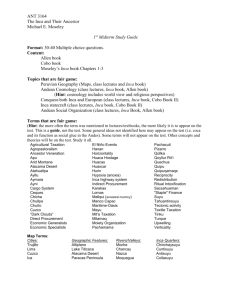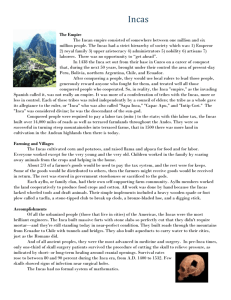The Incas - Inca Life
advertisement
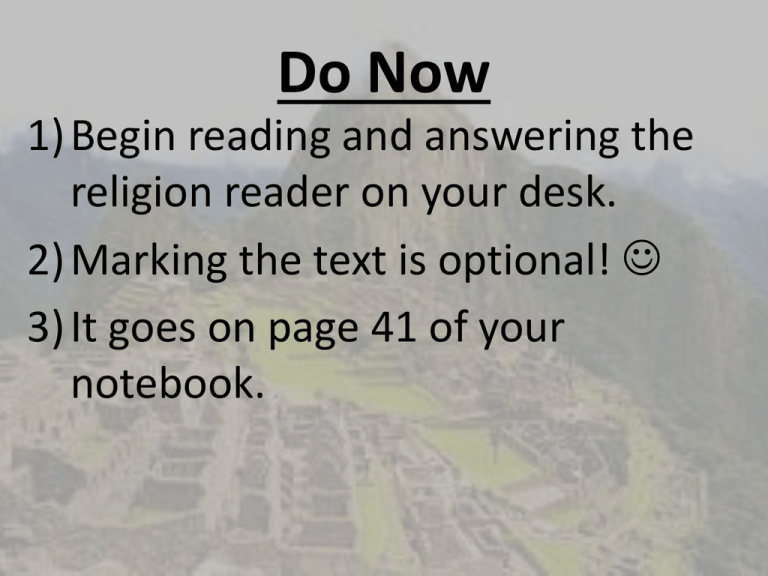
Do Now 1) Begin reading and answering the religion reader on your desk. 2) Marking the text is optional! 3) It goes on page 41 of your notebook. Chapter 15.3 Review • 1a. What were two things the central Inca government controlled? • Local government, language, and economy were controlled by the ventral government . • 1b. How did pre-Inca civilizations adapt to their environment? • They built terraces to farm in mountains, make irrigation cannas, etc... • 1c.Do you think the mita system was a good government policy? Why? • Yes, it was a good policy because it allowed effective resource distribution. No, it was a bad policy because it limited freedom. – Looking for opinion and an explanation. Chapter 15.4 Review • 1a. Who were the members of the Inca upper class? • The Emperor, his family, and nobles( priests, and government officials) were the members of the upper class. • 1b. How were Inca government and religion related? • The king was believed to be a descendant of the sun god, from which he gained power. • 1c. Why do you think Inca law outlined what clothes people of carious classes could wear? • This might have been don’t to make it easy to identify who belonged to which class. Religion Reader • Read and answer the questions. Marking the text is optional today! http://www.youtube.com/watch?v=hKmOmyviUfI Incan Daily Life LA 42 • How was Incan daily life unique from the Aztec and Maya? Inca Daily Life • Commoners – divided by age and gender • Men: • tended flocks, raised crops, served in army • Women • gather plants, weave for nobles, work in temples The Incas - Inca Life (Community Life) • Lived in ayllu – a group of families that lived in same location • Shared land, food, animals, & resources • Farmed for government primarily. • Commoners also have to provide a mita (labor tax) • Had to work for state for certain number of days the during year • Could be military or construction of bridges and roads The Incas - Inca Life (Trade) • Incas did not use money • Most communities produced necessary goods (More of a barter system) • Simple markets existed to exchange food for goods like wool Inca Religion • Incas were religious, but little is know because didn’t write • Worshiped many gods – 1/3 of year was devoted to religious celebrations. • Inti – Sun god and most important • Believed descended from him and owed special worship • Inca priests performed rituals to bring a good harvest or ensure loyalty • Sacrificed mostly animals like llamas (rare human sacrifice) • Mountains, rocks and some springs were considered sacred. • Sapa Inca – honored as a living god (descended from Inti) • Commoners had to lower head when he passed Homework • Finish Cornell Notes – summary and questions. • Work on study guide • Work on project
